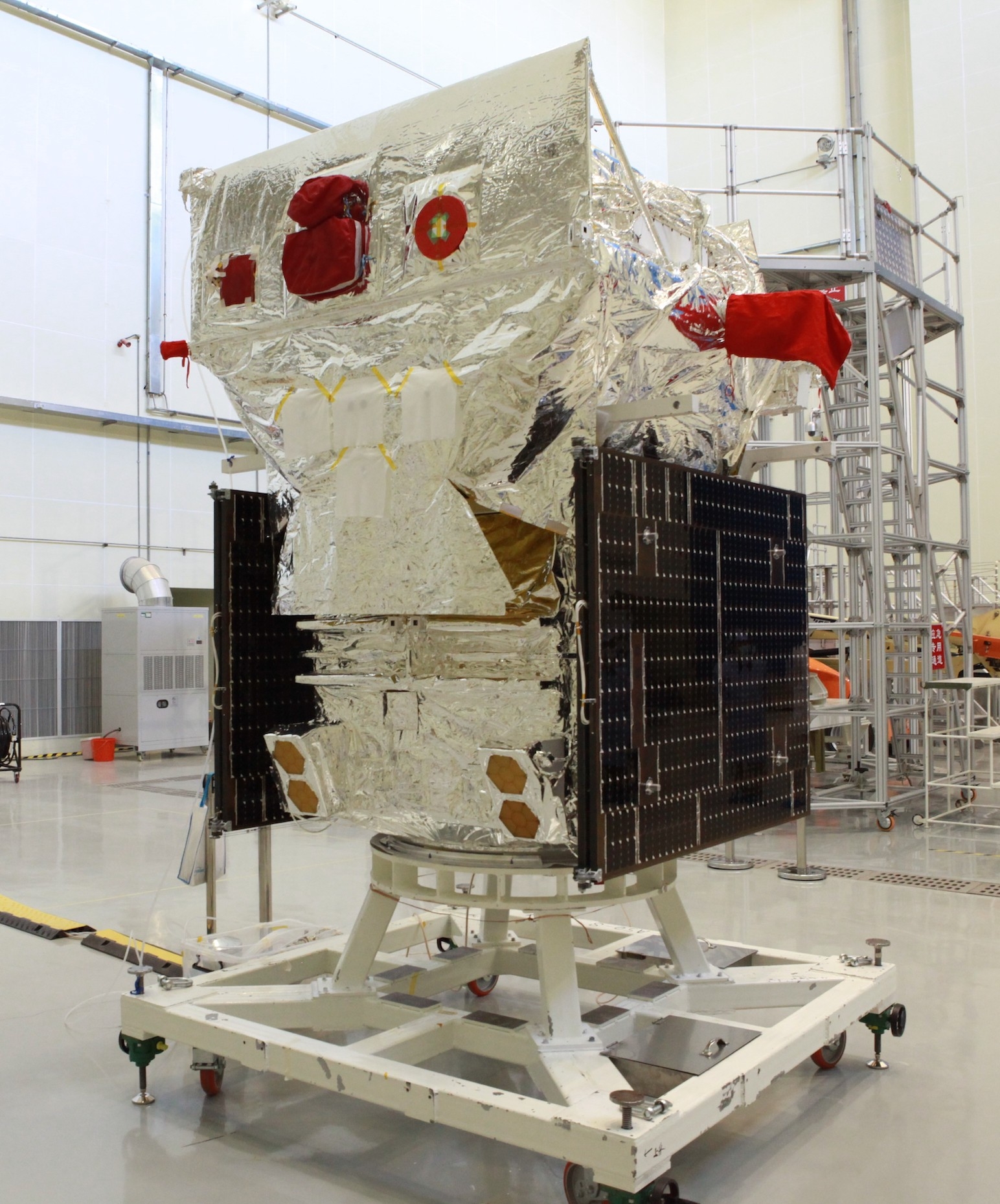By SONG Jianlan
On the morning of October 9, the Advanced Space-based Solar Observatory (ASO-S), the first comprehensive satellite for solar dedicated observations of China, flew into its preset orbit from the country’s launching site in Jiuquan. Nicknamed Kuafu-1 after a mythological man well-known in Chinese culture for his persistent chase of the Sun, the 859 kg satellite will help scientists understand how some prominent solar activities happen and how they interplay with each other; meanwhile it will also provide support for warning and mid- to long-term forecasts of disastrous space weathers.

Working in a sun-synchronous orbit 720 km above sea level, ASO-S will be able to avoid interference from the Earth’s atmosphere. Upon finishing an in-orbit testing and calibration lasting for four to six months, Kuafu-1 will officially begin its normal observation and stay working in-orbit for at least four years. After processing, the obtained data will be open in real-time to scientists all over the world for solar physics research, together with necessary software for data analysis.
ASO-S is specially designed to investigate into three types of prominent solar activities, in the hope of revealing their formative mechanisms and mutual interplays. According to Prof. GAN Weiqun, the Chief Scientist of the ASO-S mission from the Purple Mountain Observatory (PMO) under the Chinese Academy of Sciences, the objectives of the project can be summarized as “1M2B”, namely the solar magnetic field (1M) and the two most violent bursts (2B) of the Sun – the solar flares and coronal mass ejections (CMEs). These prominent solar activities play an important role in space weathers like solar winds, energetic particle events and magnetic storms, and hence significantly influence the daily life of human beings; yet they are not fully understood by scientists so far, in particular their origins, interplays and energy transport mechanisms.
Proposed by the Chinese solar community in 2011, ASO-S mission was adopted as a verified project under the CAS-sponsored Strategic Priority Program on Space Science (SPPSS-II) at the end of 2017. The satellite is designed to carry three payloads: the Full-disk solar vector MagnetoGraph (FMG), the Lyman-alpha Solar Telescope (LST), and the solar Hard X-ray Imager (HXI), respectively, aiming at measuring the solar magnetic field, and observing CMEs and solar flares.
The unique combination of these payloads will allow solar physicists to simultaneously perform three tasks on a single platform: observations of the vector magnetic field of the full Sun, obtaining non-thermal images of solar flares, and monitoring the initiation and early propagation of CMEs in Lyman-alpha line, so that to better understand the relationships among solar magnetic field, solar flares, and coronal mass ejections.
The LST will track the solar bursts from the solar surface all through the near-corona areas to monitor their developments. According to Dr. FENG Li, LST data scientist of the ASO-S team, solar observations in Lyman-alpha band is limited so far, therefore exciting discoveries could be expected through this lens.

ASO-S, taken just before the installation into the CZ-2D rocket (Image by ASO-S Team)
Launched at the eve of a peak time of solar activity, Kuafu-1 is expected to harvest abundant data from frequent solar bursts. On average, solar activities peak every 11 years, and we are now in a solar activity cycle that began in late 2020 and will end around 2031. Kuafu-1 might experience a “busy solar season” in late 2024 through early 2025 and in a good timing to greet the rising tide and see the ebb.
The data might help scientists better understand the triggering and driving mechanisms of solar flares and CMEs, which have been elusive for the international solar physical community; it might also help unveil the hidden connection between solar flares and CMEs. Solar physicists tend to agree that both solar flares and CMEs are driven by the Sun’s magnetic field, but how the magnetic agitation emerges and evolves has remained an open question. “Observations of the source areas on the solar surface could be of vital importance for understanding the whole physical process,” says GAN.
The data obtained by ASO-S will also offer clues about how the solar atmosphere responds to solar bursts at different atmospheric levels, hence will shed some light on the underlying energy transport mechanisms and dynamic properties of solar bursts.
Revealing this energy transport mechanism will help us better understand how energy is distributed and later released by flares and CMEs, and hence help us predict the properties of energetic particles that bump into the near-Earth space during the bursts – source of the solar wind.
The investigation will finally help improve our forecast capability for space weathers, says GAN. For example, in principle we might be able to forecast the occurrence of solar energetic particle events minutes or dozens of minutes early if the transmission were instant. As for CMEs, he continued, “we might be able to forecast their arrival dozens of hours or even days early.”
The satellite’s name means a lot for the Chinese people. On the one hand the legend of Kuafu, a deity who kept chasing the Sun till death, mirrors the persistent and brave efforts of ancient Chinese to explore the Sun; on the other, it heralds a new era spearheaded by ASO-S and future solar satellites that features comprehensive solar observations.

